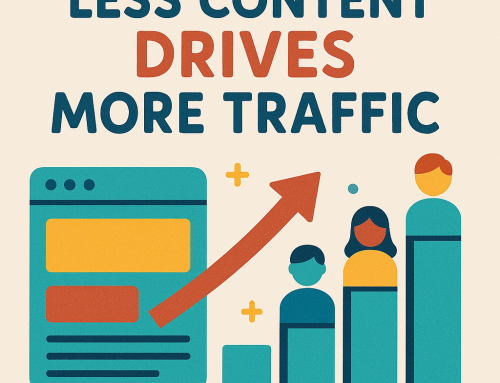 “SEO is never done” is a phrase that is thrown around a lot, mostly because it’s true! However, when most people talk about the continuation of a SEO campaign, they are usually referring to offsite link building. SEO is about more than developing inbound links! Without a well optimized link to send traffic to, all your hard work offsite is just going to waste. Don’t let your onsite SEO go years before you revisit it. Here are 3 quick onsite SEO touchups you can do today to make sure your site is in top SEO shape:
“SEO is never done” is a phrase that is thrown around a lot, mostly because it’s true! However, when most people talk about the continuation of a SEO campaign, they are usually referring to offsite link building. SEO is about more than developing inbound links! Without a well optimized link to send traffic to, all your hard work offsite is just going to waste. Don’t let your onsite SEO go years before you revisit it. Here are 3 quick onsite SEO touchups you can do today to make sure your site is in top SEO shape:
Replace Old Whitepapers With Updated Versions
All industries change with time, some just evolve faster than others. If you want your website to become a trusted source of information for your target audience, you have got to make sure you are giving them the most up-to-date and relevant information at all times. That’s simple enough to do on a business blog; as long as you are publishing new content on a regular basis, the blog will stay fresh and useful. However, many site owners forget to treat their website’s resource section with the same care.
As part of a well-rounded content marketing strategy, you should be creating whitepapers, articles, videos and other forms of informational content for your target audience. However, these whitepapers/articles are not forever current. As your industry evolves the information in them becomes obsolete. Unlike your business blog, which may get updated every day with the latest and greatest industry news, these whitepapers can sit for years on your site, waiting to be downloaded. When was the last time you read through those whitepapers? How much of that information is still applicable today?
Writing an entirely new whitepaper is going to take a lot of time, research and effort. If you just can’t fit that into your schedule, why not just update your existing whitepapers? Some of the core information might still be relevant, but you can add or delete sections as needed. You can re-promote them as your 2012 version and give them a second chance at life!
Revisit Your Keyword Research on Poorly Converting Pages
Every page of your website has the potential to be a landing page for a visitor. This is because the search engines rank individual pages, not websites as a whole. It’s important to conduct keyword research on a page-by-page basis for that exact reason. The keywords you select should be an accurate reflection of each page of content. Many websites fail to convert because they target the wrong keywords, meaning they attract the wrong visitor.
Using your website’s analytics, determine which pages of your site are under-performing in terms of converting. Reread the content with fresh eyes and make sure the keywords you are targeting make sense. Did you miss the mark the first time around? The more you know about your target audience the more you can understand their intent when searching. For instance, “BPM” could mean “beats per minute” or it could mean “business process management.” The same search phrase is applicable in multiple situations! Is your website taking that into account?
It could also mean you missed out on important keyword variations your target audience is using. For instance, I run a SEO company. It could also be called a SEO firm, SEO agency, search engine optimization company, SEO services firm and so forth. People are going to search for the same thing using different terms. If your website only focuses on one of these variations, you’re alienating a large segment of your target audience.
Incorporate New Call-To-Actions
You have to make it very clear to visitors to your site about what you want them to do. Should they call your office? Fill out a lead form? Download a free tríal? Spell it out for them and then repeat those call-to-actions throughout your site. Every visitor to your site is going to have different motivations driving them, so you can try to appeal to those motivations by incorporating different call-to-actions throughout your site.
For instance, an e-commerce site could use call-to-actions like “Búy now and guaranteéd delivery in 3 days” to appeal to last minutes shoppers or “Spend $50 today and receive 10% back as a gift card for future purchases” to go after shoppers looking for a deal. The goal is all the same, to get shoppers to purchase now, but each call-to-action focuses on a specific benefit that appeals to particular shoppers.





